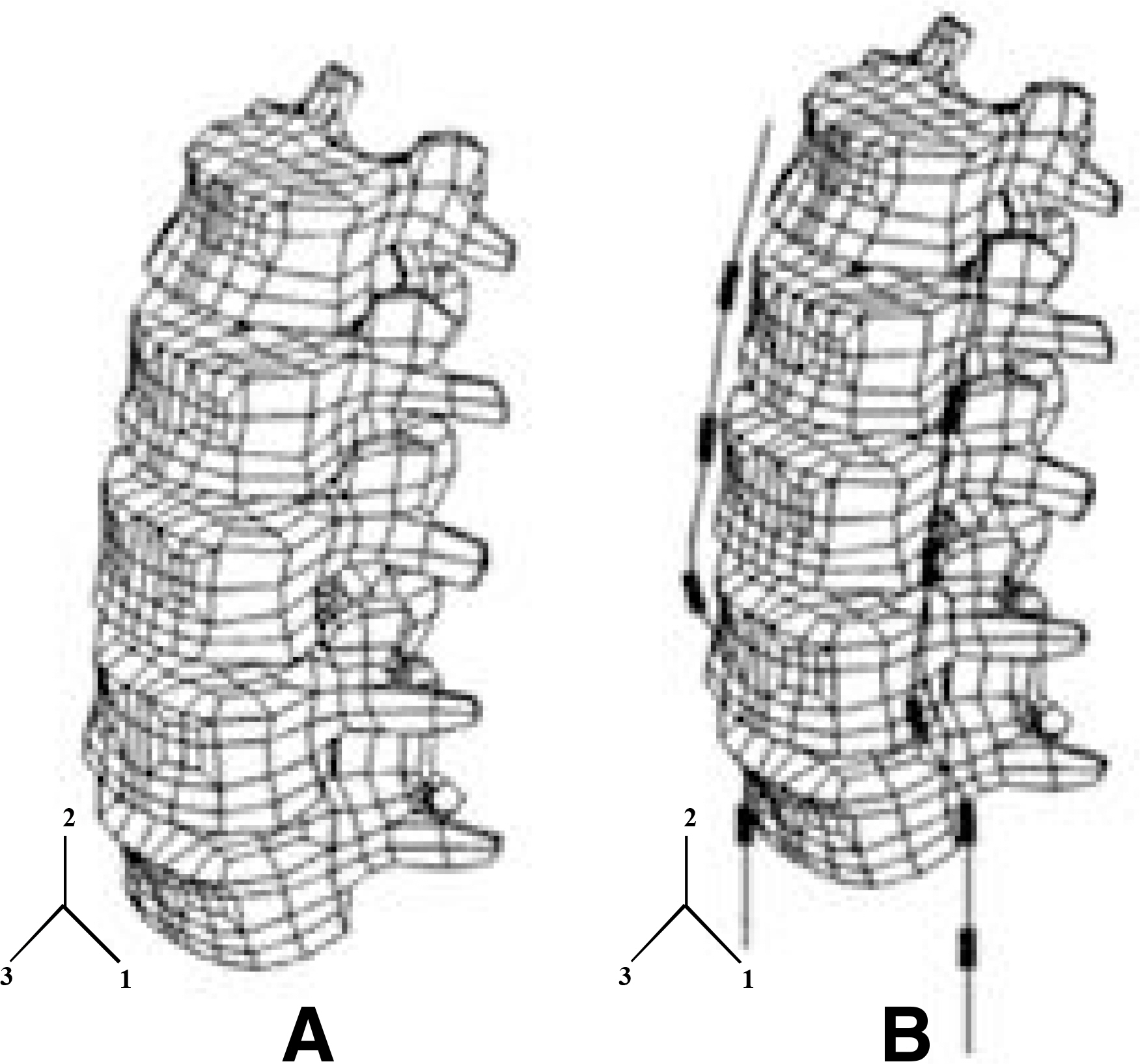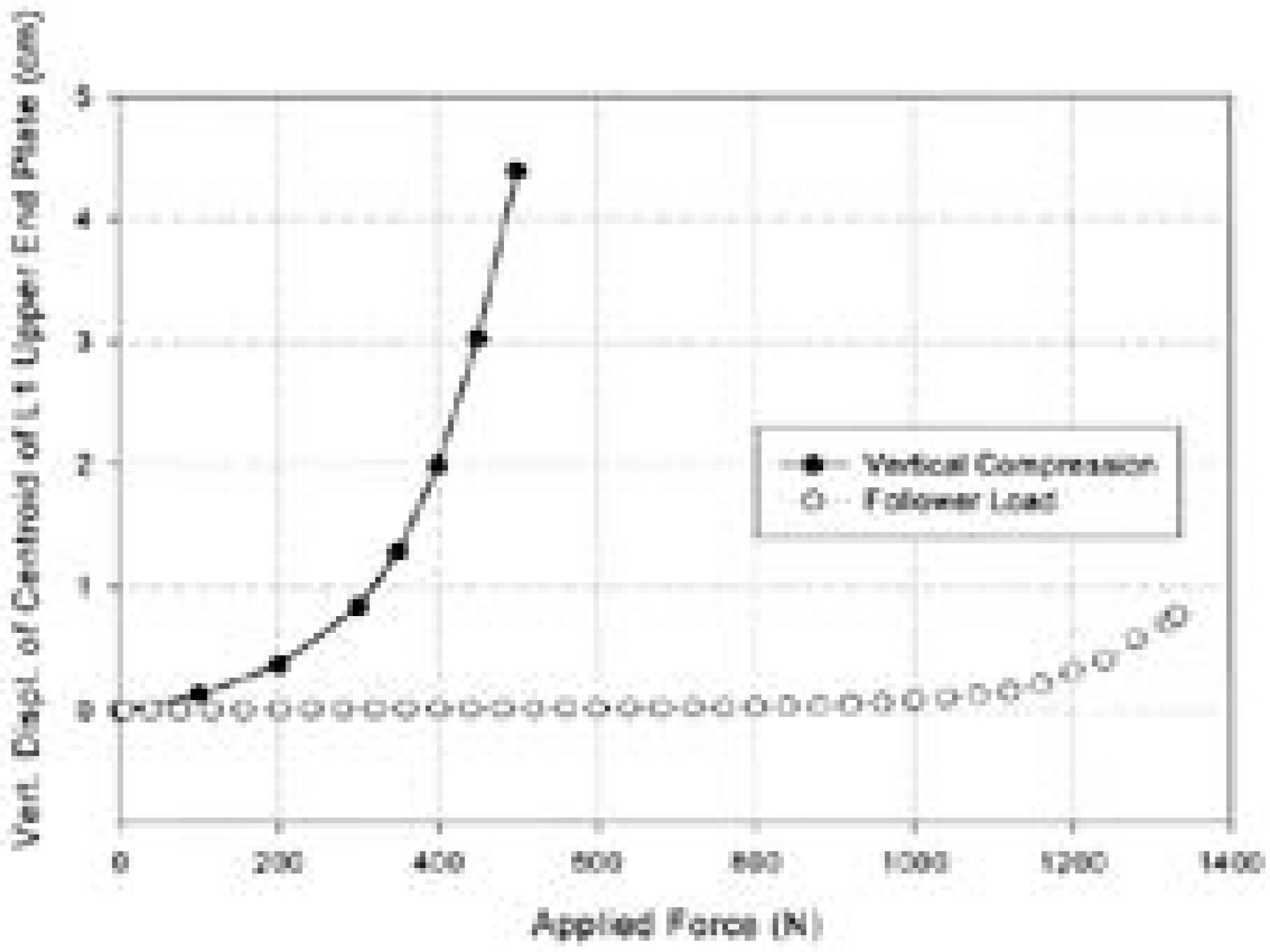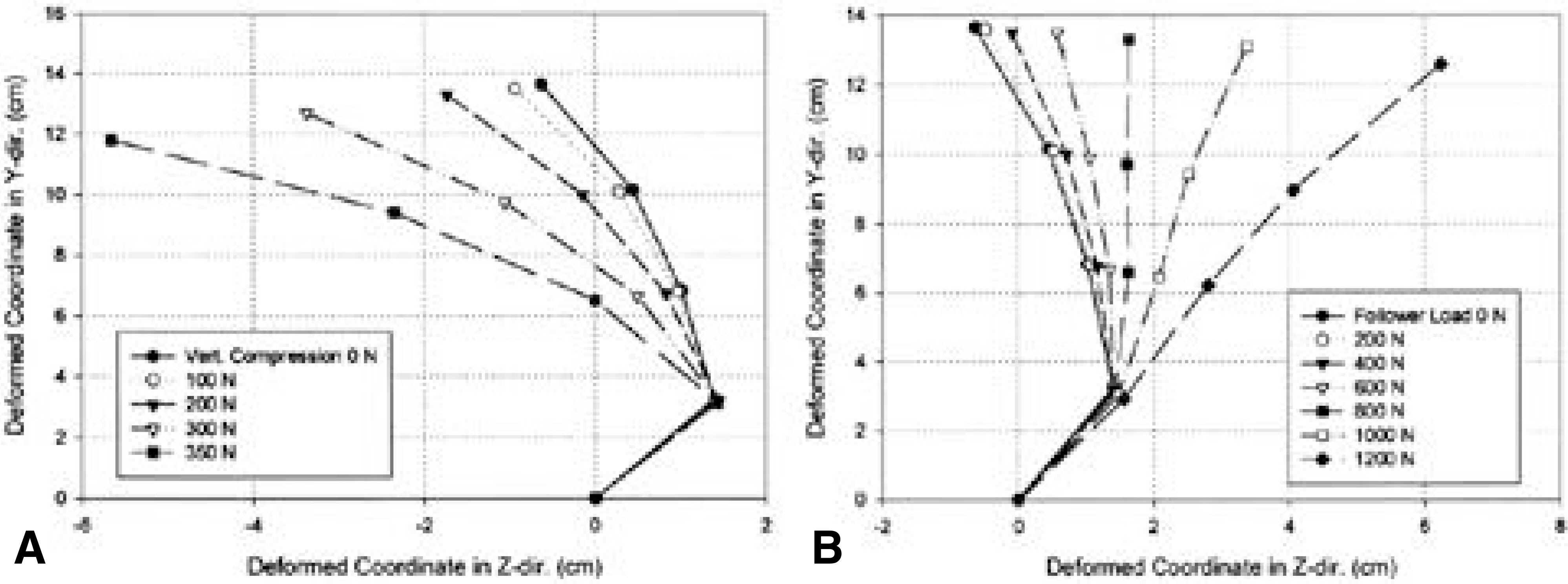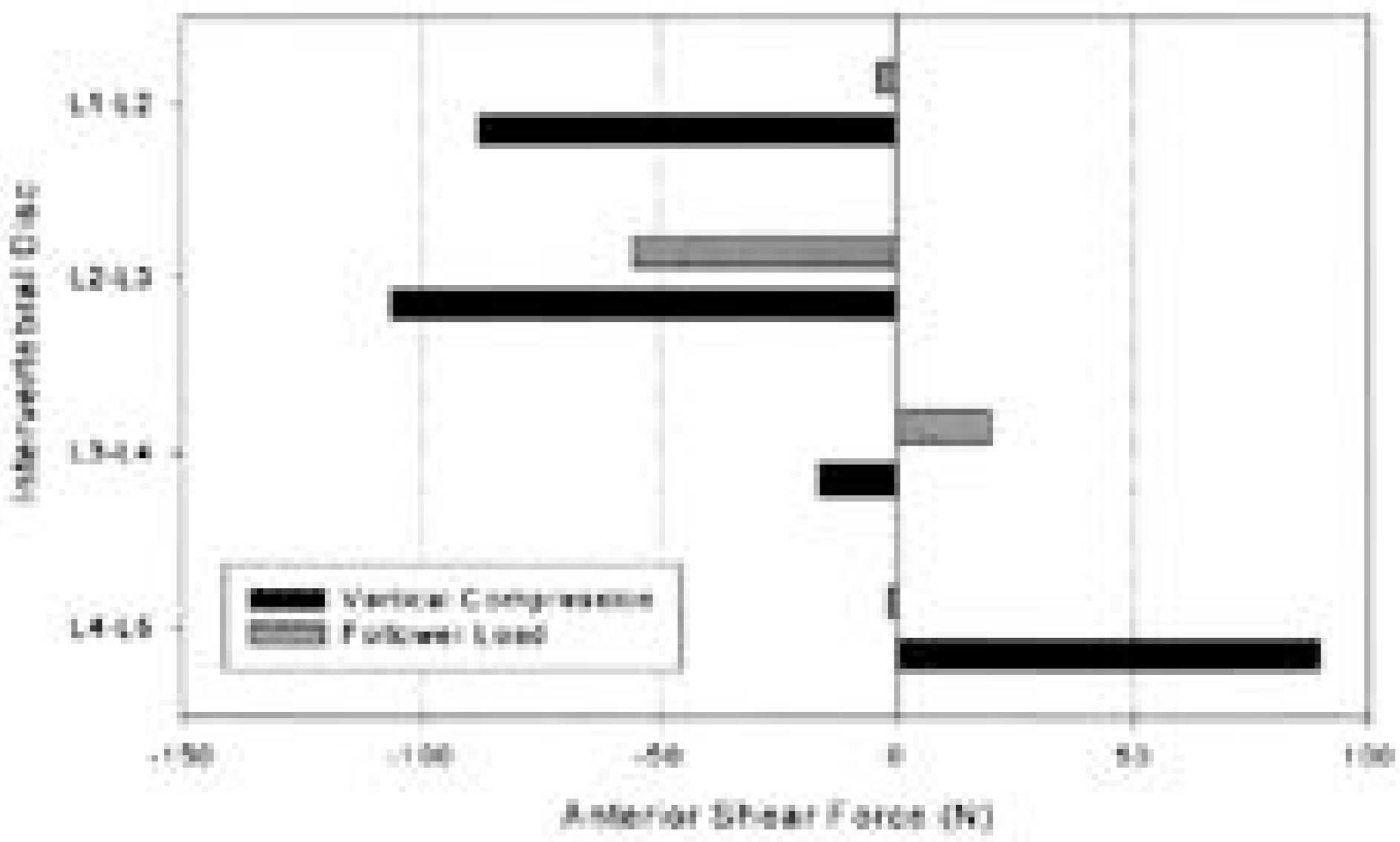J Korean Soc Spine Surg.
2002 Jun;9(2):78-83.
Analysis of Compression Behavior in Lumbar Spine Under Simple Vertical Load vs Follower Load
- Affiliations
-
- 1Department of Orthopaedic Surgery, College of Medicine, Yeungnam University, Korea. mwahn@med.yu.ac.kr
- 2Department of Biomedical Engineering, Yeungnam University, Korea.
- 3School of Mechanical Engineering, Yeungnam University, Korea.
Abstract
-
PURPOSE: To clarify the behavior of the lumbar spine under vertical compressive load and follower compressive load and to confirm the effect of the follower load on the stability of the spinal column using finite element method.
MATERIALS AND METHODS
Describing follower compression test to overcome underestimation of load carrying capacity, the problem in existing ex-vivo lumbar spine compression test, with finite element analysis, comparing with the result of simple vertical compressive load, we analyze the property of kinetic behavior. After performing finite element modelling about L1-L5 lumbar vertebral column, analyze it about vertical compressive load and follower compressive load. Intervertebral discs with complex structure and mechanical properties was modeled using spring element that compensate stiffness and tube-to-tube contact element was employed to give follower load. With compressive load, change of lumbar spinal curve is so much, that geometrical analysis should be done.
RESULTS
Under the follower compressive load, the vertebral column was so stiff that vertical displacement of the upper end plate of L1 was markedly reduced, comparing with that under the simple vertical compressive load. Sagittal rotation of that upper end plate was also decreased in the opposite direction. Compressive load on the intervertebral disc was evenly distributed along the entire column. The bending moment at each disc was reduced in the opposite direction. A lesser A-P shear force occurred at the intervertebral disc.
CONCLUSION
As a result of finite element interpretation of lumbar spine, the stability and load carrying capacity was increased largely, and the compressive load was transmitted through the column in a more pattern, when follower compressive load applied. This can provide the basis for explaining the difference of early buckling occurrence reported in ex-vivo testing, and load carrying capacity of the lumbar spine in-vivo, but, for more precise replication of behavior of lumbar spine in-vivo to variable loading. A invention of a more precious finite element interpretation model which consider the role of muscle around the spine is loaded.
Figure
Reference
-
1). Nachemson A. Lumbar intradiscal pressure. (in. Jayson MIV, editor. ed.The Lumbar Spine and Back Pain. Edinburgh: Churchill Livingstone;pp.p. 191–203. 1987.2). McGill S. Loads on the lumbar spine and associated tissues. (in. Goel VK, Weinstein JN, editors. eds.Biomechanics of the Spine: Clinical and Surgical Perspective. Boca Raton: CRC Press;pp.p. 65–95. 1990.3). Patwardhan AG, Havey RM, Meade KP, Lee B, Dunlap B. A follower load increases the load-carrying capacity of the lumbar spine in compression. Spine, Vol. 24(10):1003–1009. 1999.
Article4). Rohlmann A, Neller S, Claes L, Bergmann G, Wilke H. Influence of a follower load on intradiscal pressure and in-tersegmental rotation of the lumbar spine. Spine. 26(24):E557–561. 2001.
Article5). Chung I, Ahn MW. Simplified FE analysis for the design of pedicle screw system. J. Biomed. Eng. Res., Vol. 21:559–566. 2000.6). Chung I, Lee CY. Section forces in pedicle screw systems for lumbar spine. J. Biomed. Eng. Res., submitted.7). Shirazi-Adl SA, Shrivastava SC, Ahmed AM. Str ess analysis of the lumbar disc-body unit in compress: A three-dimensional nonlinear finite element study. Spine. 9(2):120–134. 1984.8). Goel VK, Kim YE, Lim TH, Weinstein JN. An analytical investigation of the mechanics of spinal instrumentation. Spine. 13(9):1003–1011. 1988.
Article
- Full Text Links
- Actions
-
Cited
- CITED
-
- Close
- Share
- Similar articles
-
- Analysis of Compression Behavior on Intervertebral Disc L4-5 in Pedicle Screw System Instrumented Lumbar Spine under Follower Load
- The Changes in Range of Motion after a Lumbar Spinal Arthroplasty with Charitetrade mark in the Human Cadaveric Spine under Physiologic Compressive Follower Preload : A Comparative Study between Load Control Protocol and Hybrid Protocol
- Biomechanical Changes of the Lumbar Segment after Total Disc Replacement : Charite(R), Prodisc(R) and Maverick(R) Using Finite Element Model Study
- Comparison of Mechanical Property of Conventional Rods versus Growing Rods for Pediatric Early Onset Scoliosis
- The Effects of Ramp Gradients and Pushing–Pulling Techniques on Lumbar Spinal Load in Healthy Workers








